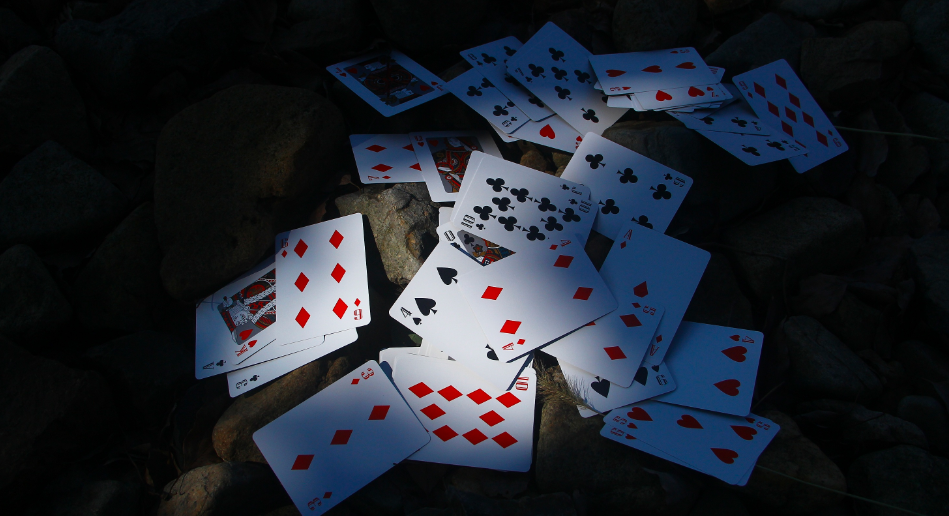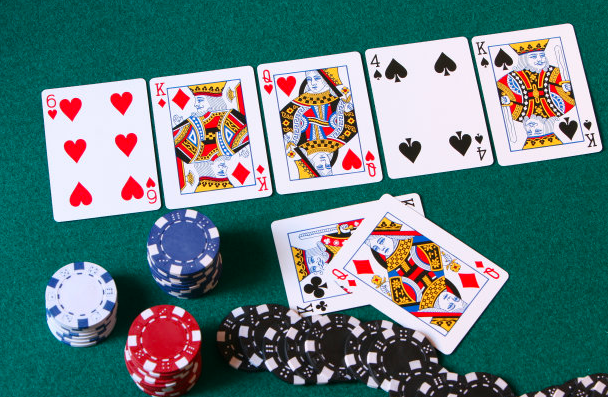All Pwin777 players should know the two ways to win in the Texas Hold’em Poker Game. One is to get the most enormous combination of cards after several betting rounds; the other is that all opponents fold. Comparing the two, the latter is less risky, so today, I want to share with you the concept of fold equity.
What is fold equity? – Pwin777 Poker Game
Folding Value in Poker Games
Fold equity is the equity you get based on the possibility that your opponent will fold your cards to you. Fold equity is a relatively important concept because every time we force our opponent to give up their cards, we will earn value. Understanding fold equity can help us win more than the value of splitting the pot and increasing our winning rate.
The relationship between fold value and pot equity
So, at this time, we can calculate that if we do not bet or raise and reach the stage of comparing cards, our fold equity is 0, and our victory depends entirely on the pot equity. The reason why I don’t share the pot win rate is that the fold win rate is widely used in Texas Hold’em games. We can put pressure on the opponent by the size of the bet, forcing the opponent to give up his whole card and then win the game.
Bluffing with Fold Value
If we have enough chips to bet and raise, the fold win rate can be applied to any occasion and game. Currently, we can rely purely on the fold win rate to win the pot by means of betting. Of course, skilled players can identify occasions with a large amount of fold win rate and use bluffing skills appropriately. This is also the essence of successful bluffing.

Example of fold win rate – Poker Game
If we have Q♦J♦ as a hole card against other players, we raise before the flop, then bet on the flop and turn, and finally, the public cards on the table are A♦9♥7♦5♠2♣. At this time, we only have a broken flush drawer. If we have folded under normal circumstances, because our chances of winning are very slim if we compare cards, we only have a Q high and no pair cards. So, at this time, if we want to win this game, we can only choose to continue to rise. Only by raising will our opponent think about what our hole cards are. If the opponent does not have a winning hand, then the probability of the opponent folding is still relatively high, which will also give us a chance to win the pot.
Player factors related to folding win rate – Poker Game
When we judge the fold win rate of our cards, we must first evaluate our controllable factors at the table. The first is our table image. This is very important; the table image will directly affect our fold win rate. We can start with the most basic analysis: whether we play very tightly and often show solid cards or frequently get caught by the opponent’s neck when stealing chickens, how many chips do we usually start with?
Frequency and Fold Value in Poker Games
So, the more we play at the table, the greater the probability that the opponent will fight back, so our fold win rate will be lower when competing for the pot. If we play less and always play very tightly, we will likely use unconventional play to win a big pot. At this time, the opponent would rather believe that we have a big hand, so our fold win rate will be maximized. This is also a good strategy in the Texas Hold’em tournament. Establish a suitable table image in the early stage, and when the blinds and antes won in the later stage are more valuable than our chips, there will be a fold win rate.
Bet Sizing and Fold Value
The second is the betting scale. In terms of getting the most fold equity, a good player will speculate the opponent’s hole cards into a range, and then use part of that range as a target to force a fold. In an average competition, we can choose any size of bet. If we think the opponent’s range is weak, we can use the fold equity to put pressure on the opponent, and it doesn’t matter if we place a smaller bet. But if we think we can force some strong hands that the opponent may have to fold, we may need to make an over-pot bet or even all-in.
The impact of perceived range on fold value.
So, the third point is that we need to learn to perceive the range because our perceived range will also have a more significant impact on the fold equity. Usually, we will show our hole cards to give the opponent a particular understanding of our gameplay. If we often win the game by showing solid hands, the opponent will give more trust when we bet or raise pressure. At this time, if there is a shocking card on the public cards, even if we have a feeble hole card, we can force the opponent to give up this game by raising or going all-in because the opponent will think that we have a super strong hole card from the initial impression. If we have shown some weaker cards before, we need to reduce the possibility of a fold win rate because the opponent will call or even raise more casually.
Evaluating your opponents and folding value
The fourth point requires us to evaluate our opponents, think about what cards they have, and observe their game tendencies. Are they aggressive and often mixed into the game, or are they more selective and give up good hands? This may sound a bit counterintuitive, but in terms of statistics, when the opponent is tight, the fold win rate is generally higher. Because these opponents sometimes have more vital cards than loose hands, but they feel that they are not sure of the winning rate, they often choose to give up this game and look for opportunities again. This is also a point we need to pay attention to. Never bluff fish players because fish players seldom give up their cards.
Effect of Number of Opponents on Fold Value
The fifth point is to determine the number and position of opponents. Everything in Texas Hold’em depends on position. The standard strategy applies a fold win rate according to position. The later we raise the cards, the weaker the opponent perceives them. Please note that the image of the table also has a specific impact. For example, a raise from a tight player in the early position will look much more potent than a raise from a maniac in the same position.
So we need to determine the number of opponents. Ideally, there should be no more than one opponent because the fewer opponents, the greater the probability of winning the pot by betting or raising. When there is only one opponent, our fold equity is 50%. If there are two or three opponents in the hand, our fold equity is only 25% or even lower. So try not to choose bluffing in multi-player pots.

Conclusion
In conclusion, fold equity is a strategy, not a style of play. It may be fun to win pots with weak hands using fold equity frequently, but that is not the secret to being a winning poker player. We should never forget that pot equity is another driving force, and by combining the two effectively, we will win more pots. Evaluate what hands our opponents may have and how they may guess our hands. Comparing these ranges based on the board cards and then making logical decisions to use all the information to win the game is the most fun.
Follow Pwin777, the top online casino, and play the best poker games!
